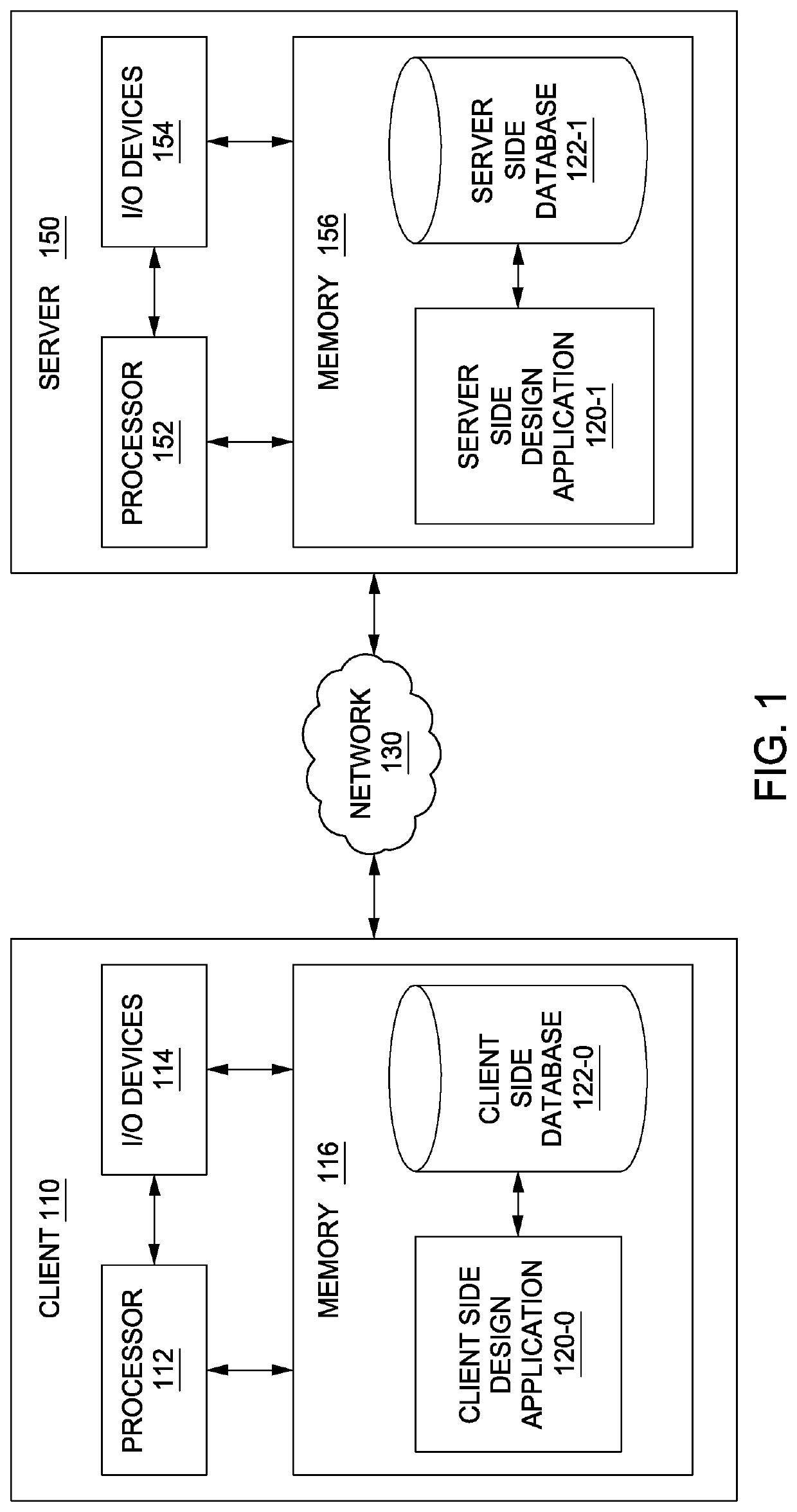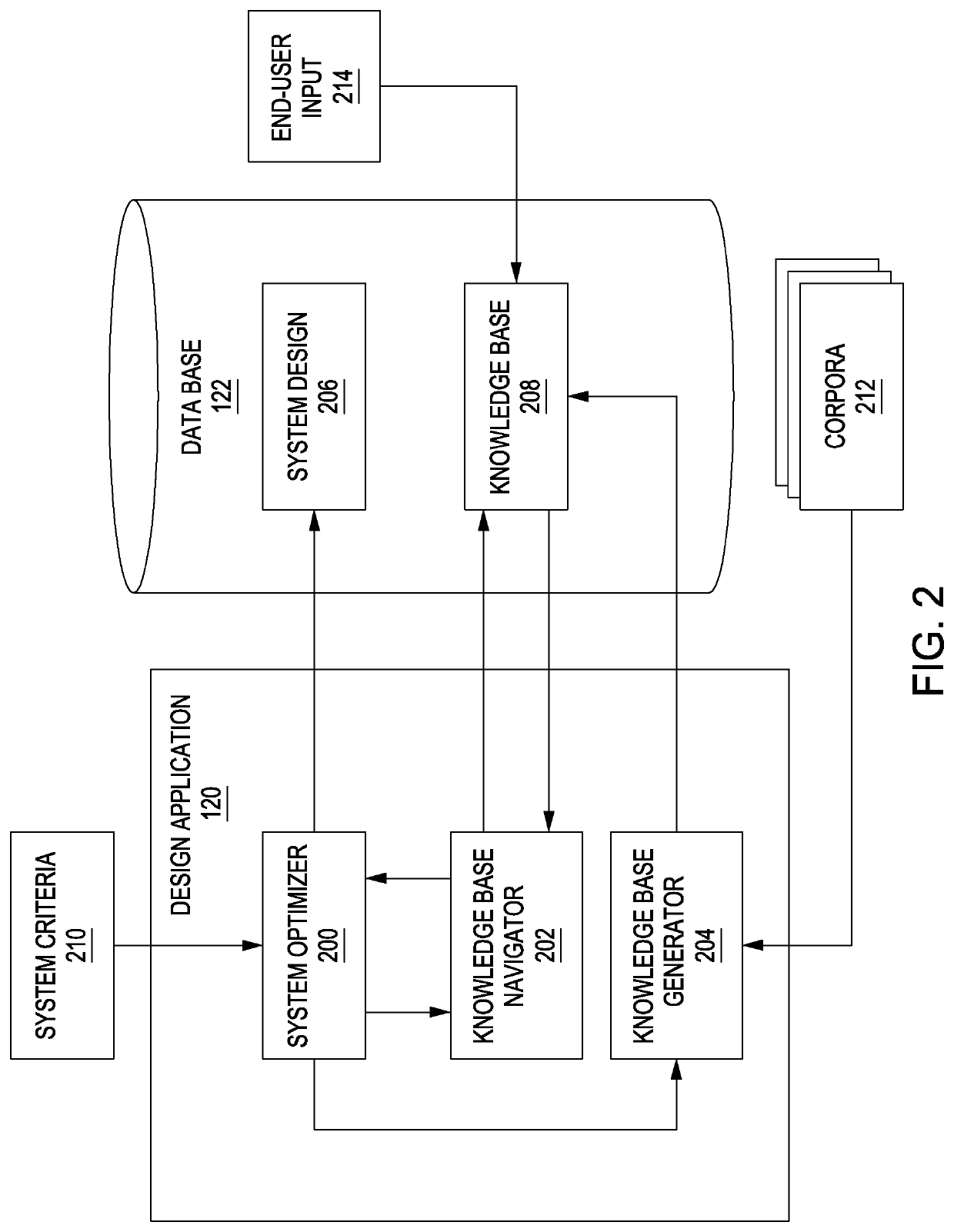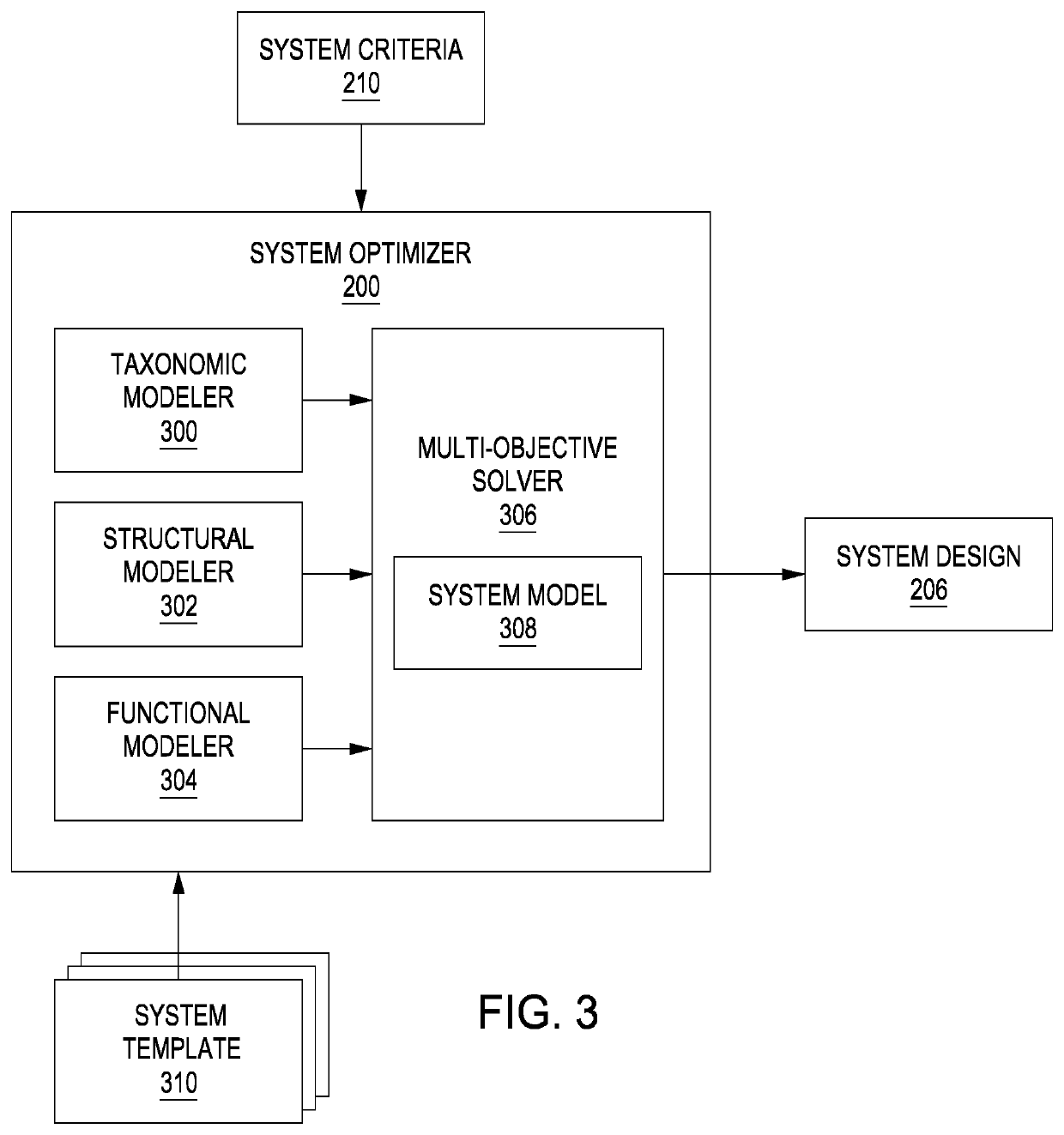System-level approach to goal-driven design
a system-level approach and design technology, applied in the field of computer-aided design, can solve the problems of inability to account for cad tools, inability to design individual parts,
- Summary
- Abstract
- Description
- Claims
- Application Information
AI Technical Summary
Benefits of technology
Problems solved by technology
Method used
Image
Examples
Embodiment Construction
[0033]In the following description, numerous specific details are set forth to provide a more thorough understanding of the present invention. However, it will be apparent to one of skill in the art that the present invention may be practiced without one or more of these specific details.
System Overview
[0034]FIG. 1 illustrates a system 100 configured to implement one or more aspects of the present invention. As shown, system 100 includes, without limitation, a client 110 coupled via a network 130 to a server 150. Client 110 may be any technically feasible variety of client computing device, including a desktop computer, laptop computer, mobile device, and so forth. Network 150 may be any technically feasible set of interconnected communication links, including a local area network (LAN), wide area network (WAN), the World Wide Web, or the Internet, among others. Server 150 may be any technically feasible type of server computing device, including a remote virtualized instance of a c...
PUM
 Login to view more
Login to view more Abstract
Description
Claims
Application Information
 Login to view more
Login to view more - R&D Engineer
- R&D Manager
- IP Professional
- Industry Leading Data Capabilities
- Powerful AI technology
- Patent DNA Extraction
Browse by: Latest US Patents, China's latest patents, Technical Efficacy Thesaurus, Application Domain, Technology Topic.
© 2024 PatSnap. All rights reserved.Legal|Privacy policy|Modern Slavery Act Transparency Statement|Sitemap



